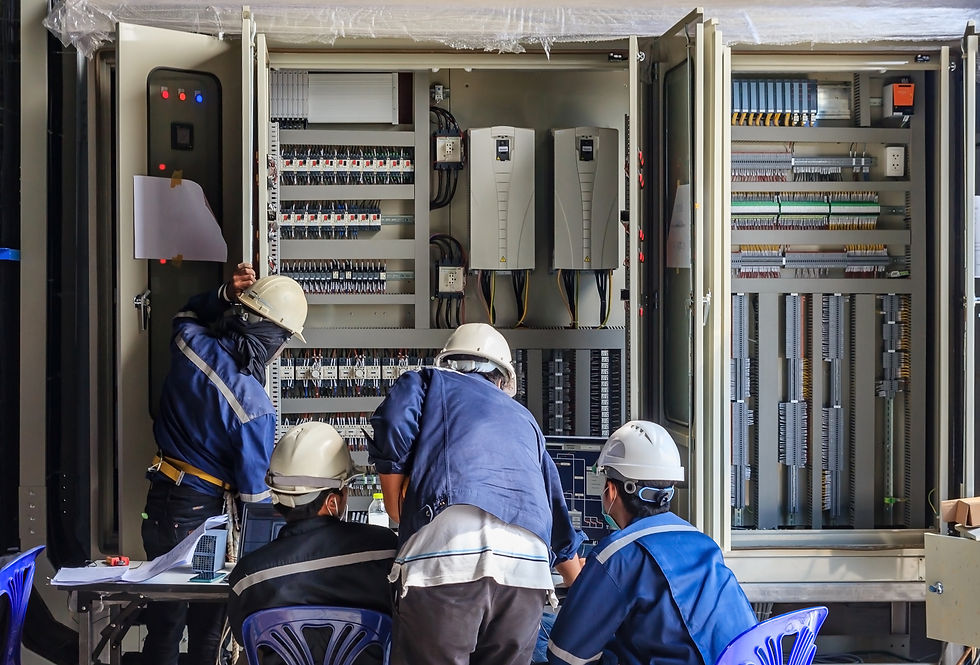AI’s Dirty Secret: The Environmental Cost of Innovation
- Yellow Bunny

- Jun 24
- 3 min read
Updated: Jun 26
Queensland is buzzing with talk of a power surge, and households and small businesses are bracing for a sharp spike in electricity prices. While the usual culprits, coal outages, network upgrades and gas prices are in the mix, there’s a new player quietly driving demand: artificial intelligence.
As AI tools become more embedded in daily operations, they're consuming serious amounts of power behind the scenes. It’s time to unpack what this AI-driven surge really means and how to stay ahead of it with smarts, not stress.

Queensland's power challenge
Queensland recently shattered its electricity demand record, hitting 11,005 MW during a mad afternoon peak, nearly double the load data centres alone could bring to the grid.
What this looks like:
Now, let's throw AI-driven data centres into the mix and the predicted rise in connected households! We’re looking at a system nearing breaking point.
Why AI is power hungry
Data centres already use about 5% of Australia’s electricity and with AI, that could double to 8–15% by 2030
Training large models and running generative AI tools consume 2.9 Wh per query. This is roughly 10× more than a standard Google search and is the amount of electricity a typical AI tool like ChatGPT uses for a single prompt. That’s about the same as running a standard LED bulb for 17 minutes, or charging your smartphone for roughly 20 minutes
To compare, a single Google search consumes just 0.3 Wh, so AI is about 10 times hungrier per session.
That global demand around AI could add 200 TWh per year by 2030 powerlink.com.au+15goldmansachs.com+15iea.org+15.
Meanwhile, Queensland electricity demand already suffers during heatwaves—and hitting AI loading on top spells higher prices or even rolling blackouts if we don’t manage it .
It's not only Electricity. Water’s also in the mix
AI data centres use huge volumes of water for cooling, comparable to 100 households every day, even in smaller facilities and globally consistent with the annual water use of entire nations like Denmark .
That’s a concern in Queensland, where water security and drought are already looming pressures.
But what can we do?
Even without big data centres, everyday AI usage (like smart assistants, cloud tools, and smart plugs) adds to the load. Here’s how to be smarter with your use:
Be mindful of AI tools AI isn’t free, even if you are on a free version! Every chat, every query, every upload consumes energy. Use it with purpose.
Track your usage - Consider a smart plug or energy monitor to high-use devices. Real-time feedback can save 5–15% on power plus awareness helps change habits.
Schedule power thoughtfully - Use timers to shut off devices or non-essential tech after hours. Automated routines reduce unnecessary use.
Let thermostats do the heavy lifting - AI-powered home systems, like Alexa or Siri can optimise cooling and heating but thermostats can also do it with about 10–15% less energy spent .
Adjust Habits, Not Just Tech - Turn off idle devices. Wash in cold. Open windows or blinds seasonally.
We are not advocating complete change and we are certainly not anti AI. This is our future and we need to embrace it, but if the grid doesn't figure out how to manage the influx, we will pay for it sooner or later. These small actions add up and might help us, even if that is temporary.

The bigger picture
Save cash — homes and small businesses can reduce electricity bills by hundreds annually.
Ease the grid during peaks — when QLD hits record demand, reduced household load helps everyone.
Protect water supplies — smart, efficient AI use means we don’t overburden critical regions.
How Yellow Bunny amplifies this message
We help tell everyday stories that inspire action:
Real Aussie video stories: “Brendan from Banyo saved $180/yr using smart tools.”
Community campaigns: “AI-Savvy Sunday", a social challenge to turn things off effectively.
Clear corporate comms: convincing operations leaders to adopt smarter energy usage, without jargon.
Final Thoughts
AI is part of our home and work life now. The energy and water cost is mounting and real, especially in places like Queensland hitting peak demand thresholds. And whilst AI isn't pushing your power bill up drastically today, the future is still taking shape. Queensland’s energy leaders are right to be preparing now for the AI-driven grid. And you can help tell that unfolding story clearly and confidently.











